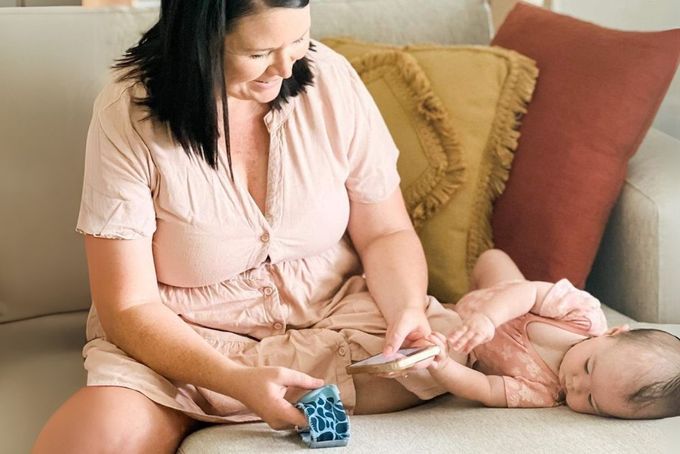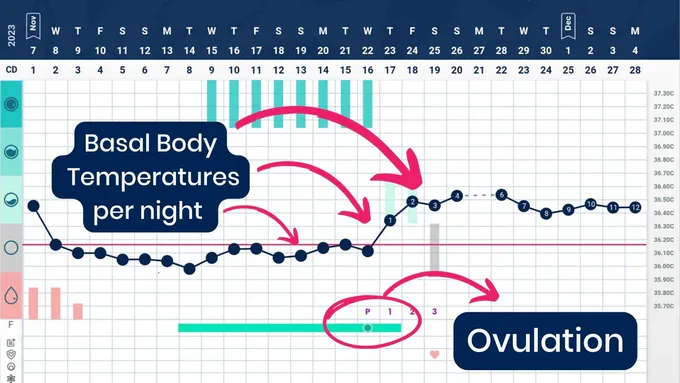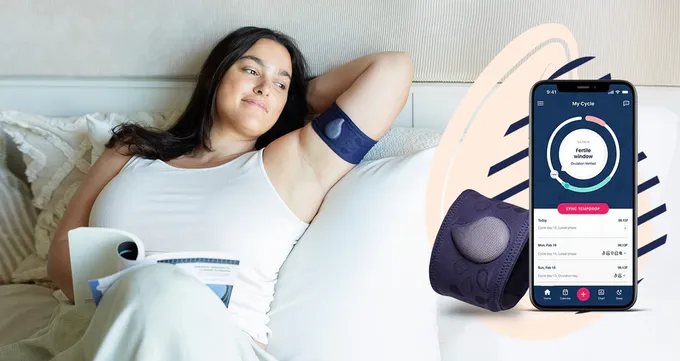Do You Need to Track Postpartum BBT?
Updated July 7, 2025

Postpartum can be a challenging and confusing time for cycle tracking, especially if your postpartum time is your first introduction to fertility awareness! Many factors impact the return of your fertility, and there are no hard and fast rules as to what to expect. In essence, every woman’s fertility during those postpartum months will be completely different so it is highly recommended to work with a FABM instructor during this time.
This article does not replace the guidance and instruction of a trained FABM instructor.
What's happening postpartum?
During pregnancy, levels of the hormones estrogen and progesterone slowly begin to rise. At birth, these hormones suddenly drop off and are replaced by a slow rise of oxytocin and prolactin, both of which play a part in bonding and lactation. Estrogen and progesterone, which are hormones involved in regular ovulation and menstruation, typically take time to eventually return.
If you decide to breastfeed, this will also change hormone production and act to suppress ovulation longer. The hormones involved in the production and release of breast milk - prolactin as well as oxytocin - suppress both luteinizing hormone and follicle stimulating hormones, which are key in promoting ovulation. The more you breastfeed and the more you’re with your baby, the more prolactin and oxytocin will be released, suppressing ovulation even longer.
This means that you’re basically in one very long pre-ovulatory phase following birth. The time it takes for the return of your fertility will be based on many factors and this can differ after each pregnancy. Just because your fertility returned at a certain time for your first baby, doesn’t mean that you will follow the same pattern for subsequent postpartum time periods.
Because breastfeeding plays a huge role in how quickly your fertility will return, there are three categories of breastfeeding patterns that concern tracking and your cycle. Each category has general guidelines of when fertility will return, but again, there are many women who experience a return of fertility outside of these guidelines!
Breastfeeding & Postpartum Tracking
Exclusive breastfeeding means that you are breastfeeding on demand, and your baby is not receiving nutrition from another source (no formula or solid foods). It applies to women who experience no vaginal bleeding for the first 56 days following baby's birth. Exclusive breastfeeding may not be realistic for many women in our current day and age, especially if you’re going back to work, have other children, or breastfeeding on demand is prevented by any other given life circumstance. If you are able and decide to exclusively breastfeed, ovulation may be suppressed for longer, and the general requirement is that you should begin to track your cycle again around 2 months postpartum. However, if your adherence to any of the requirements changes or you begin seeing cervical mucus, you should begin tracking as soon as these changes occur.
Partial breastfeeding means that you are breastfeeding but don’t meet the requirements of exclusive breastfeeding, such as supplementing with formula or starting solid foods. It is recommended that you begin tracking your cycle again at 2 weeks post-birth, or whenever you start seeing CM (or whenever you feel ready to have sex again, which may be after 2 weeks!).
If you are not breastfeeding at all,your fertility (and ovulation) can return very quickly, and it is recommended to begin charting at 2 weeks postpartum or whenever you feel ready for sex.
This is an overview of when fertility can return, and there are specific rules for avoiding pregnancy based on the method of fertility awareness that you choose to go with. It is really important to find an instructor to work with for this time.
Should you track basal body temperature (BBT) postpartum?
Basal body temperature (BBT) is the measurement of your temperature when your body is most at rest (at some point during the night). It can retroactively confirm that ovulation has happened. It is beneficial to track BBT postpartum as it will help you confirm ovulation has indeed happened, but during your return of fertility, you may be tracking BBT for a very long time before you notice a temperature shift. For some who decide to add basal body temperature to their charts, they may wait until they notice more cervical mucus, which indicates changing hormones.
The return of your fertility depends largrely on your breastfeeding patterns, and whether you are exclusively breastfeeding, partially breastfeeding, or not breastfeeding at all - although other things like how close you stay to baby also play a part. Approximately 60% of women will ovulate before they have their first period postpartum, which is why it is so important to work with an instructor to help identify the signs that indicate the return of your fertility.
An example of a Tempdrop chart showing nightly BBT readings, a fertile window and ovulation.
I highly recommend using the Tempdrop wearable thermometer once you start tracking BBT postpartum. This can make life so much easier if you are getting up in the night to feed baby, or if you have inconsistent sleep (which is very normal with young children). Tempdrop will allow you to have consistent BBT readings even if you are unable to wake up at the same time each day or if you get up in the middle of the night.







